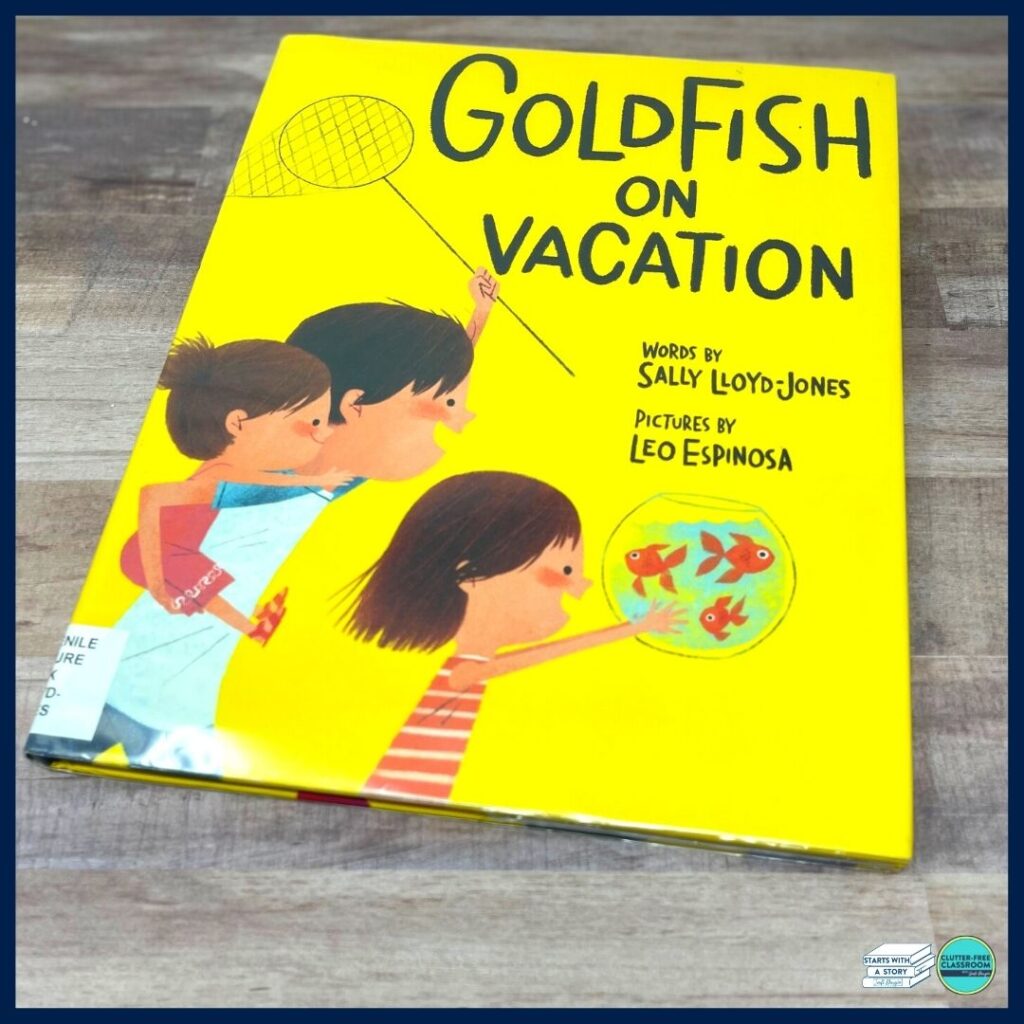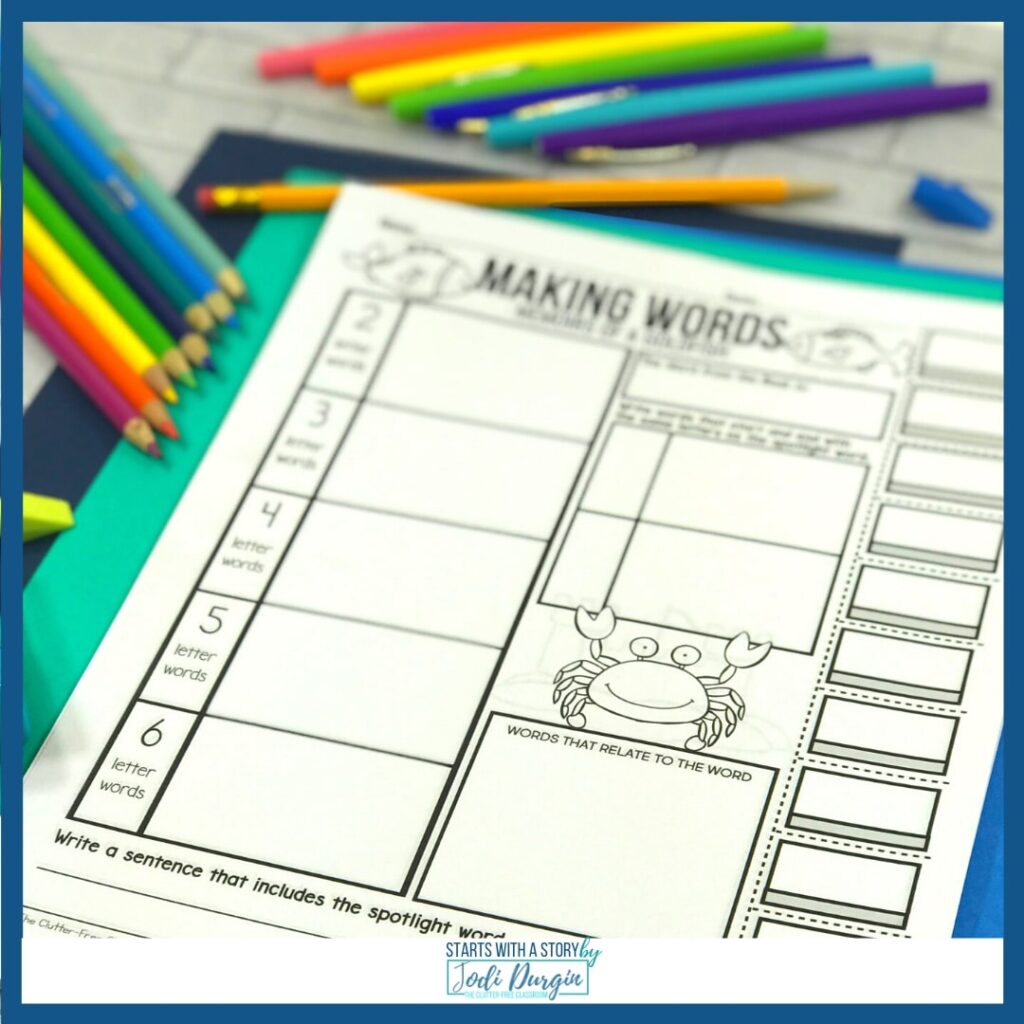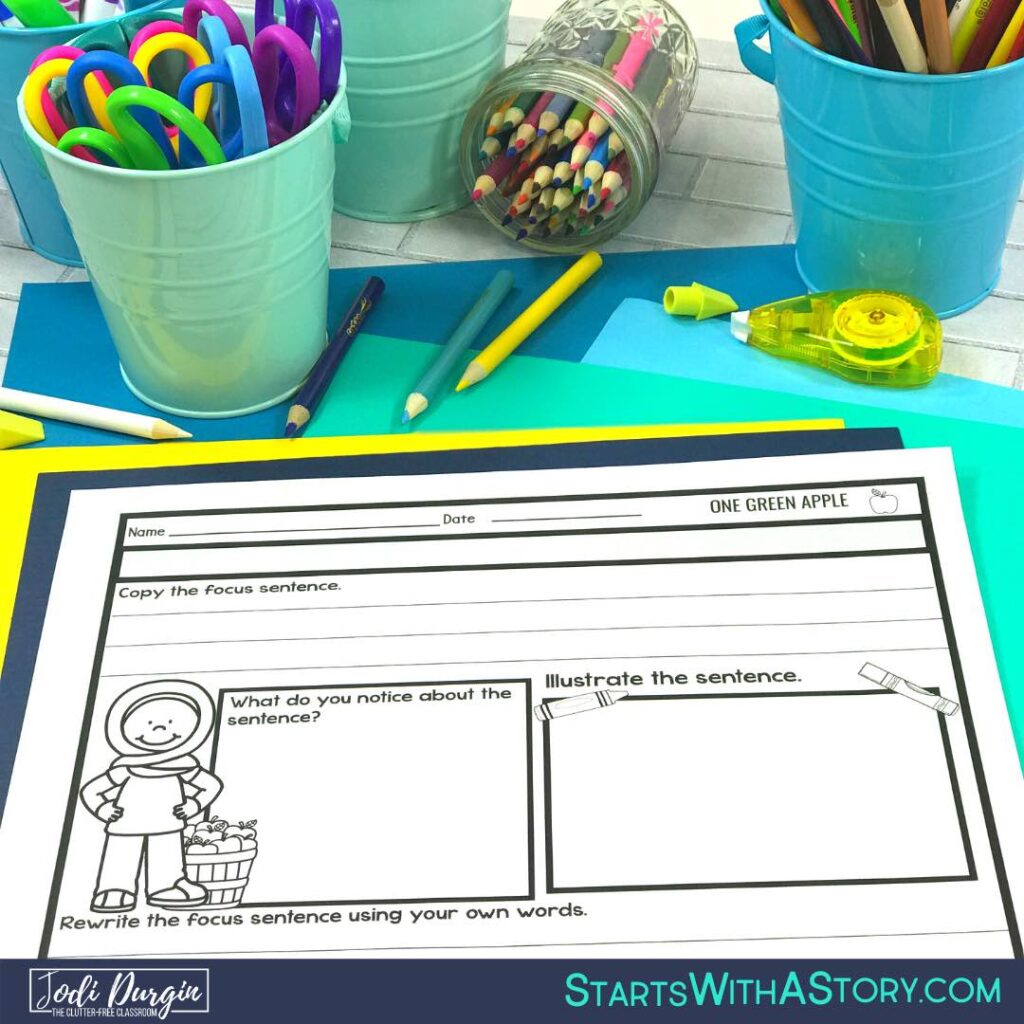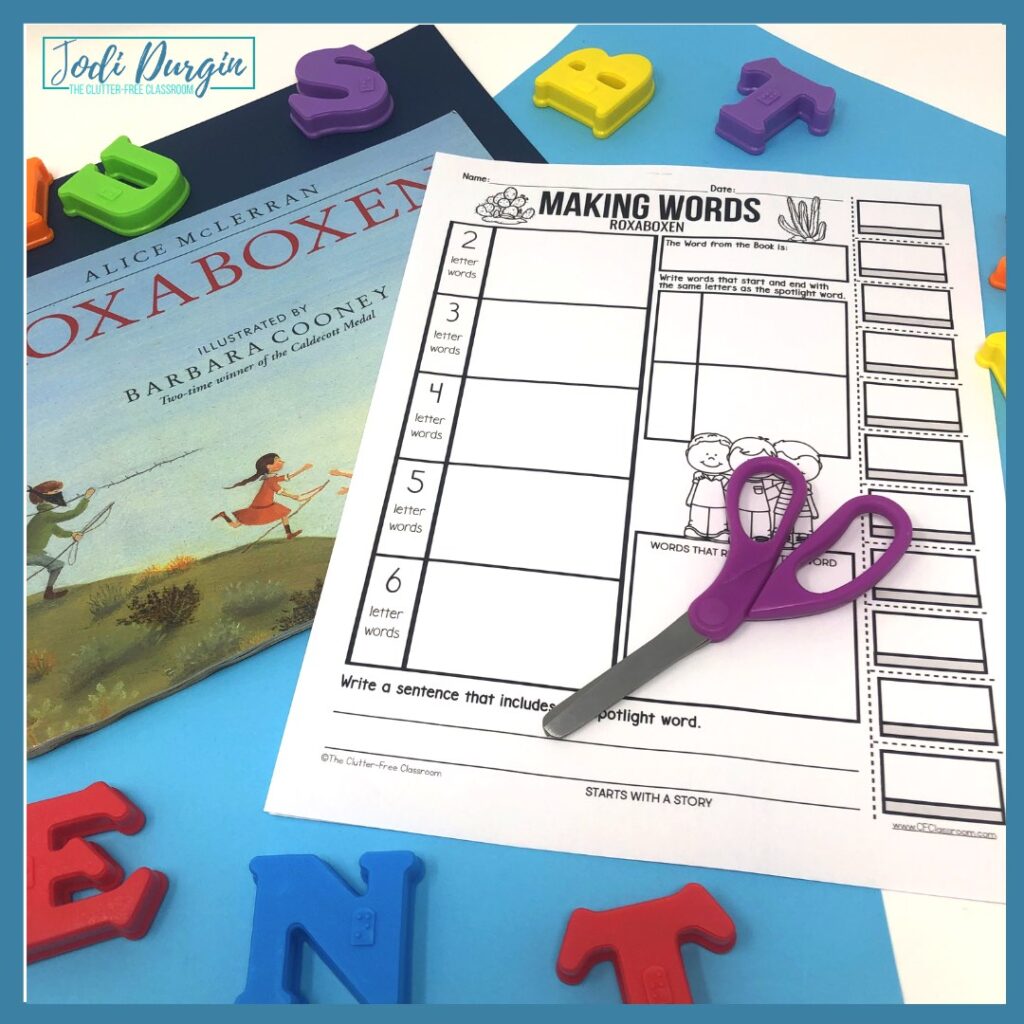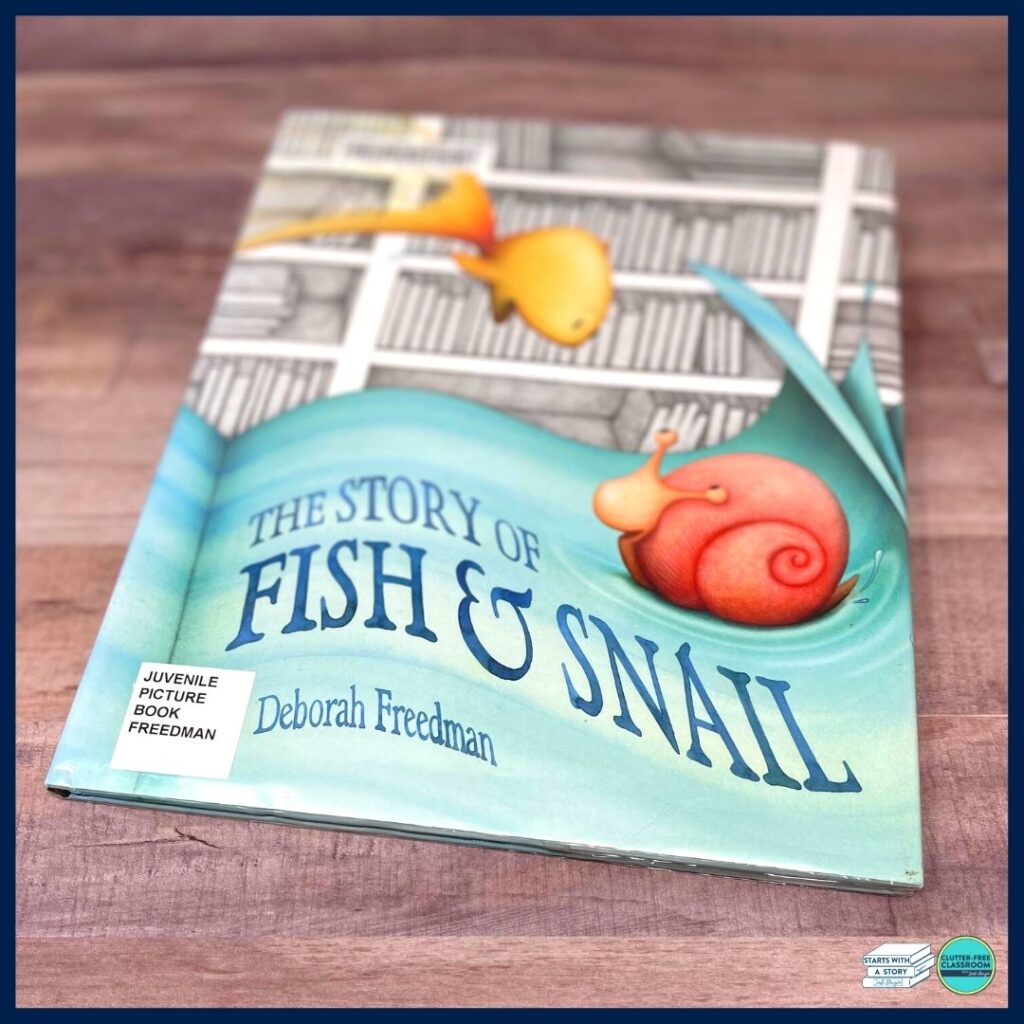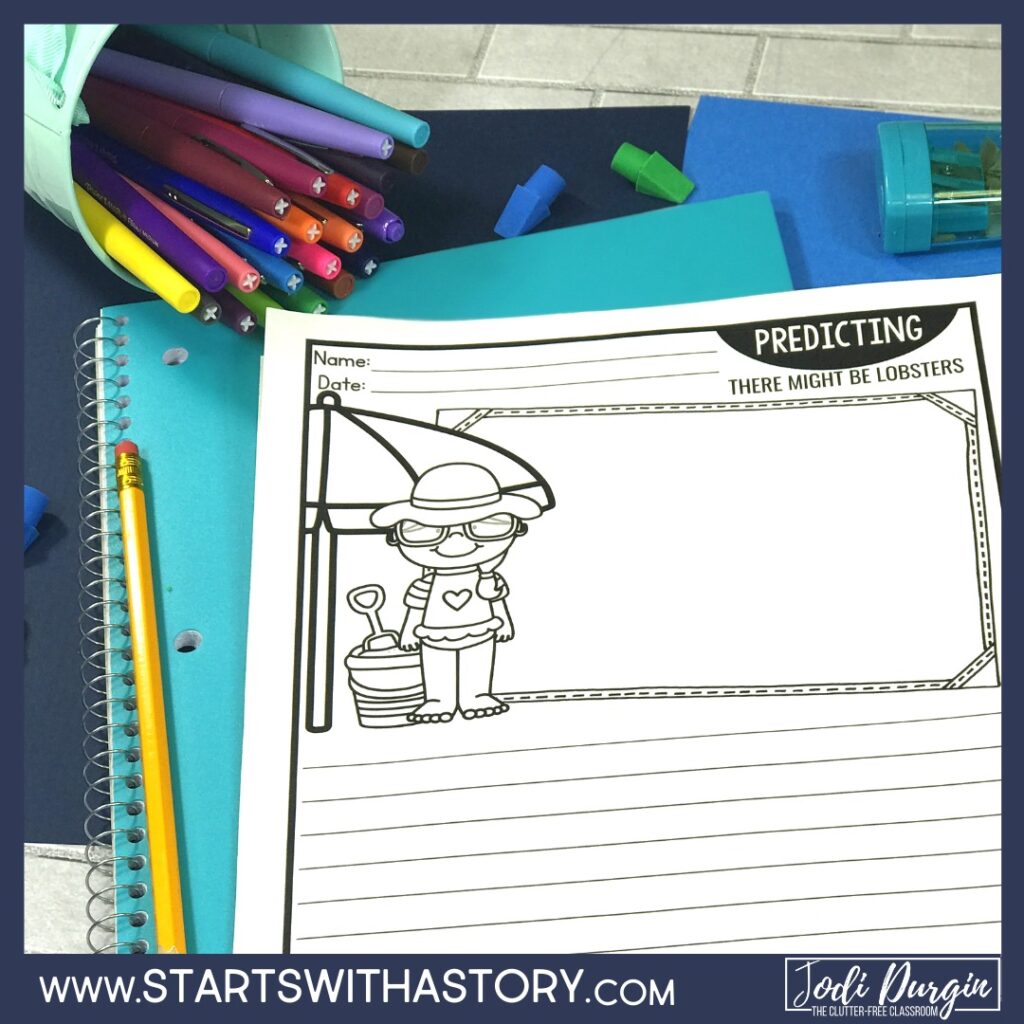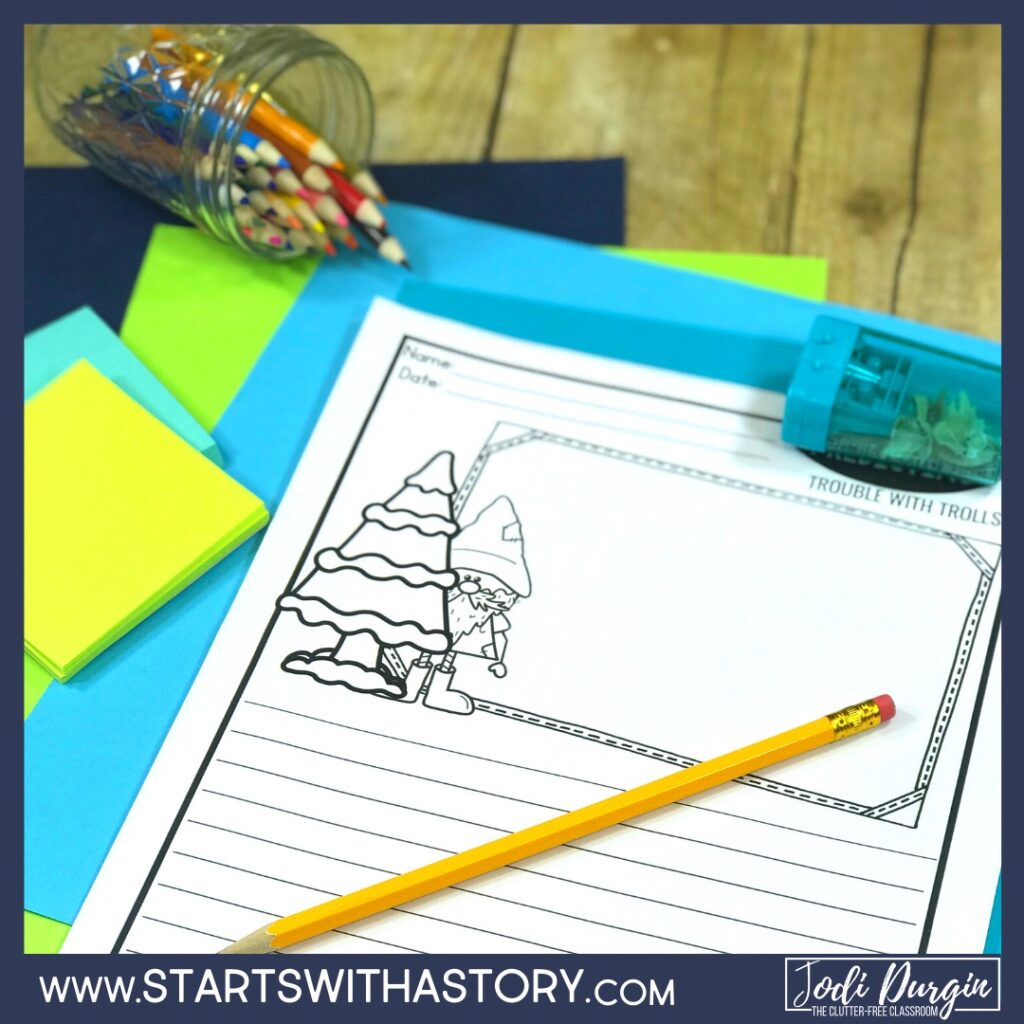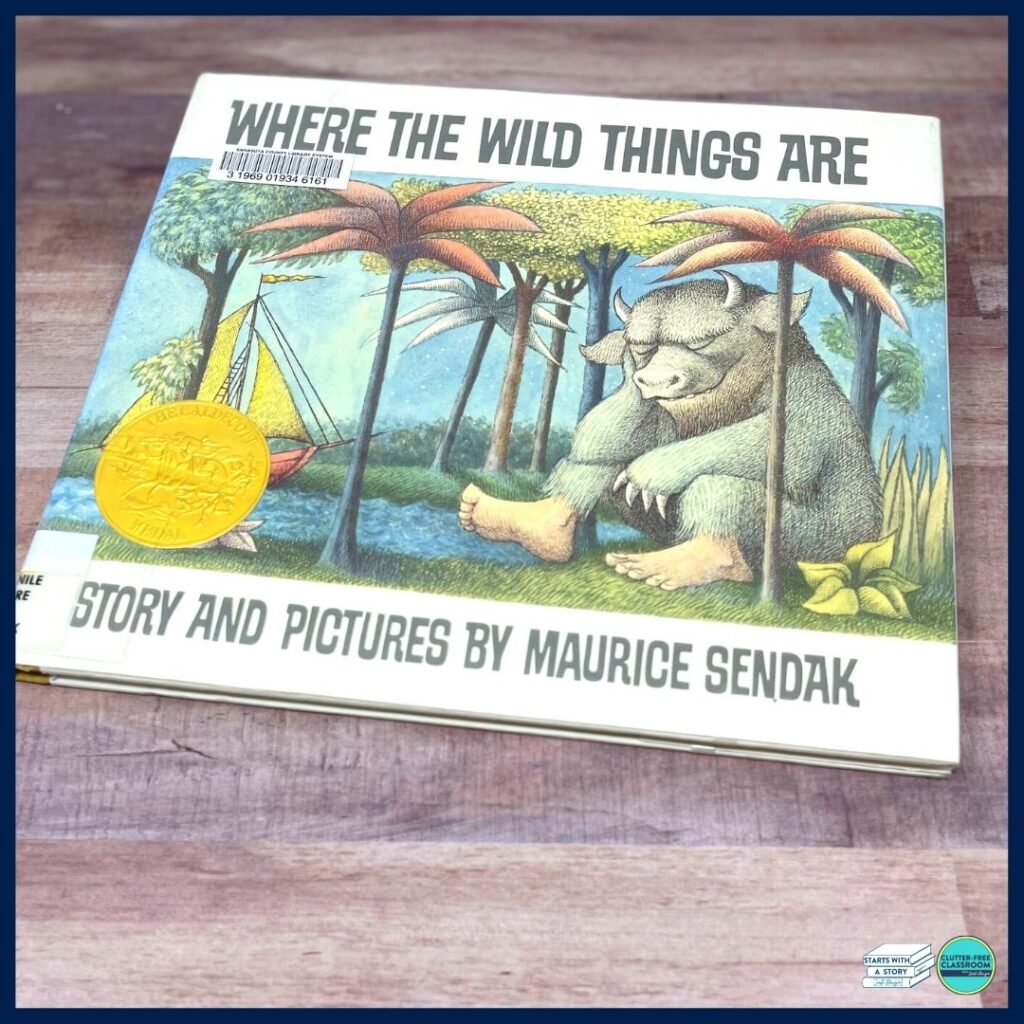A highly effective way to teach setting to elementary students is to read aloud a picture book that lends itself to teaching this reading strategy. Reading aloud a picture book facilitates a learning experience where you can model how to use the setting in a story to better understand the text and engage students in their learning by asking related questions. Below is a list of 10 picture books for teaching using the setting. Check out the full list, as well as the teaching resources that go with them!
10 Picture Books for Teaching Setting
Below are pictures books for teaching elementary students about setting.
1. Extra Yarn by Mac Barnett
Annebelle lives in a dark and dreary town, that is, until she begins knitting with colorful yarn. This is a modern fairy tale story that, with yarn, is brought from a back and white book to that full of color! Students can compare what the town looked like before and after Annebelle’s knitting. They can also explore and discuss setting in regards to time as well, as people traveled to the town solely by ships. Check out these Extra Yarn activities!
2. Goldfish on Vacation by Sally Lloyd-Jones
H, Little O, and Baby Em lived in an apartment within a city with their fish. With no plans for summer vacation, they learn that the city’s fountain is getting fixed and looking for fish to occupy it. The children (and fish!) are excited to send their pets on vacation. This story lends itself to teaching about setting because it compares the time period of the children with that of their grandfather. Students can also practice inferring seasons and locations based on the illustrations in the story. Check out these Goldfish on Vacation activities!
3. Memoirs of a Goldfish by Devin Scillian
The story-telling goldfish swims around and around in his bowl each day. He loves his routine until one day various intruders (snail, bubbler, guppies, crabs) come in and wreck his routine. It isn’t until they are gone that he realizes the importance of friends. At the end of the story, the goldfish is moved into a tank with all of his new acquaintances. This story is a great tool to practice comparing with settings. In the beginning, there is just a fish in the bowl, in the middle there are many characters in the bowl, and then in the end, there are many in a tank. Students can also integrate thinking about the goldfish’s feelings as he switches between settings. Check out these Memoirs of a Goldfish activities!
4. One Green Apple by Eve Bunting
Farrah is new to the United States and is not speaking English yet. Her class goes on a field trip to the apple orchard, and even though she is wearing jeans and a t-shirt, her dupatta makes her feel different. The beautiful setting of the apple orchard helps Farrah make connections with others, from dogs crunching to laughter. By the end of this field trip, she speaks for the first time and begins to have a sense of belonging. Check out these One Green Apple activities!
5. Roxaboxen by Alice McLerran
In the middle of a rocky hill, Marian called the area Roxaboxen. The children used cardboard boxes and rocks to create a small community here, and even as adults, they look back on these memories fondly. While reading this story, students can identify the setting in the desert. They can also make connections to their own versions of Roxaboxen. Check out these Roxaboxen activities!
6. The Legend of Rock, Paper, Scissors by Drew Daywalt
This book shares how the game of Rock, Paper, and Scissors came to be. Each was frustrated because they could not find someone able to beat them in battle, that is, until they met each other. This story is a great way to expose children to settings as each location around the home is known as a kingdom. These “kingdoms” are where you would see the items in the story, and provide students with practicing visualization and connections in regards to setting. Check out these The Legend of Rock, Paper, Scissors activities!
7. The Story of Fish and Snail by Deborah Freedman
Fish and Snail live amongst the pages of a book in the deep blue ocean. Each day, Snail waits for Fish to come home with a new story. The setting of this story provides great opportunities for inference and comparison for students. Check out these The Story of Fish and Snail activities!
8. There Might Be Lobsters by Carolyn Crimi
Eleanor is ready for a day at the beach with her dog, Sukie. As we read, we learn that Sukie is afraid of many things at the beach, especially lobsters. By the end of the story, Sukie has to be brave and conquer her fear! The setting in this story is key as it is all about the beach. Students can answer questions about summer, the beach, and even how this book would be different if it took place somewhere else. Check out these There Might be Lobsters activities!
9. Trouble with Trolls by Jan Brett
A young girl named Treva goes to visit her cousins across a mountain. As she hikes, a troll wants to take Tuffi, her dog. Treva quickly out thinks the trolls and in the end, passes the mountain and trolls safely. Students can explore levels of settings, from naming the mountain to making connections about snowy areas in the wintertime. Check out these Trouble with Trolls activities!
10. Where The Wild Things Are by Maurice Sendak
When a young boy is rude to his mother, he is sent to his room without dinner. Suddenly, his room turns into the woods, and he is surrounded by wild things. By the end, he misses his family and returns home, to a supper laid out for him. The setting makes a drastic change in the story, allowing students to see dreams from reality. Students can compare the settings and make connections to each one as they explore the two worlds. Check out these Where the Wild Things Are activities!
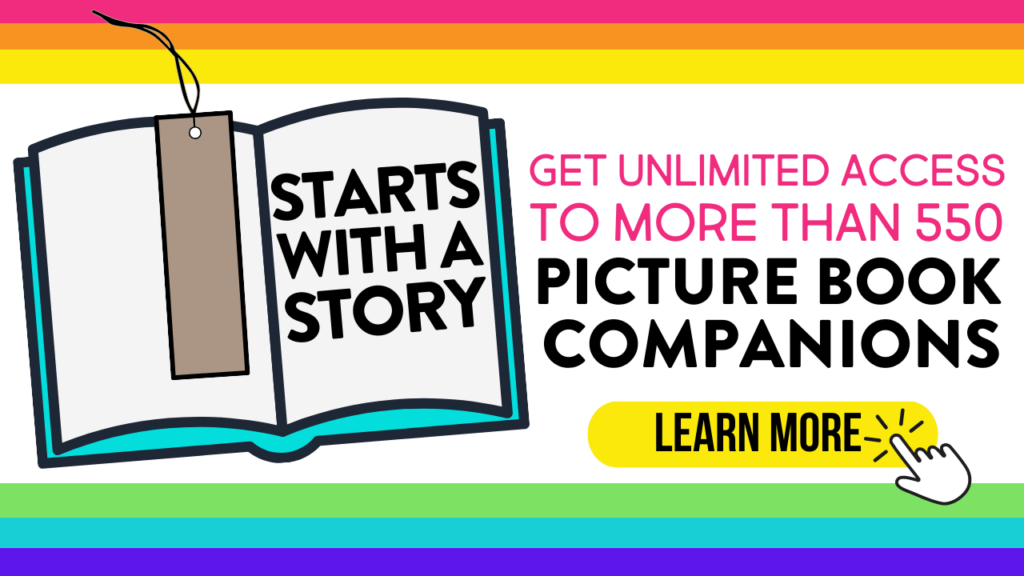
In closing, we hope you found this list of picture books for teaching setting helpful! If you did, then you may also be interested in these posts:


